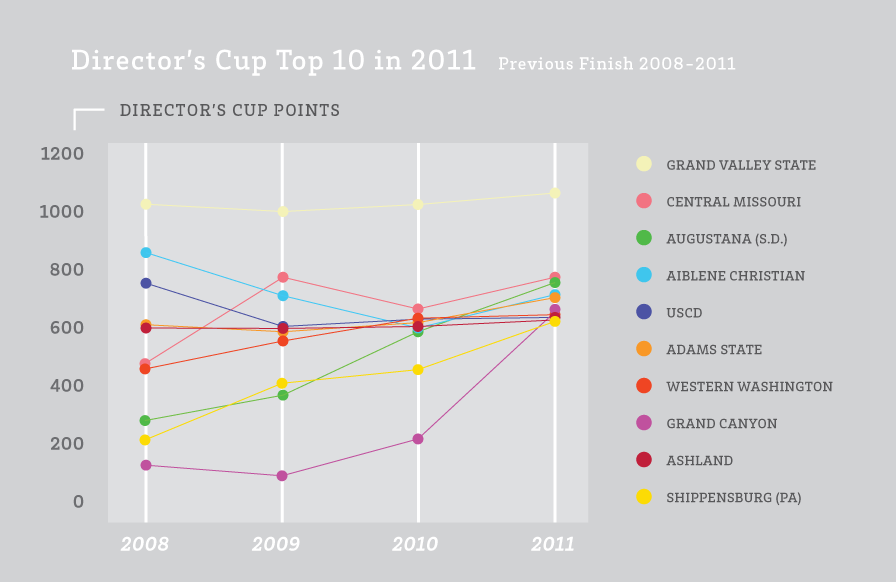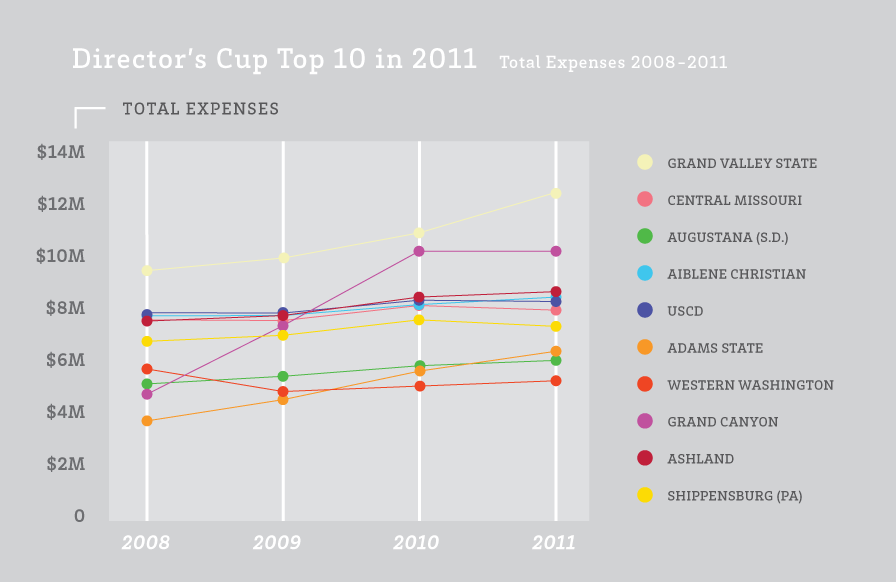In this study, we attempted to determine whether teams that “spent to win”—and had the larger budgets for their athletic programs—indeed achieved greater success than their counterparts. We looked at the Directors’ Cup, an award that takes into account all sports, as a metric to measure this success. We attempted to analyze this matter in two ways—one, by fitting a line to all Division II team’s spending versus Directors Cup points—and second, by isolating the most competitive Directors Cup teams in 2011, in this case the top ten, and looking at their points and spending for the previous three years.
For athletic spending versus success, we found a positive correlation every year between money spent and total Directors’ Cup points. As can be seen by the data below, for every year the slope for the best fit line falls between 66 and 75, showing that for every million dollars an average athletic program spends, it can expect to gain roughly 60-75 Directors’ Cup Points across all Division II conferences for which we have data.
That being said, most of the R2 are about .40. Therefore, it would be tough to say that the relationship between spending and success is exactly linear.
The graphs below shows each year’s total spending on Directors’ Cup Sports versus Directors’ Cup Success:
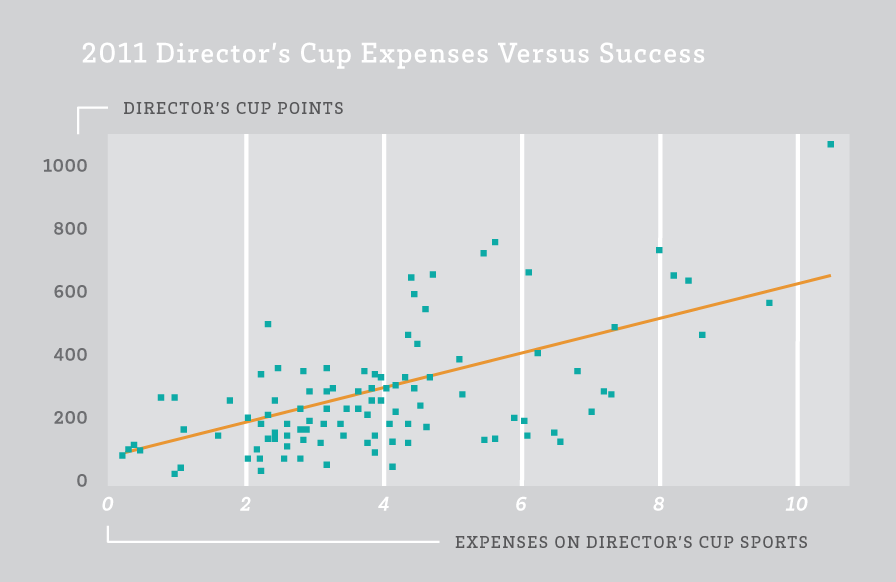
2011 Points= 66.88(Directors’ Cup Expenses in Millions)-21.70
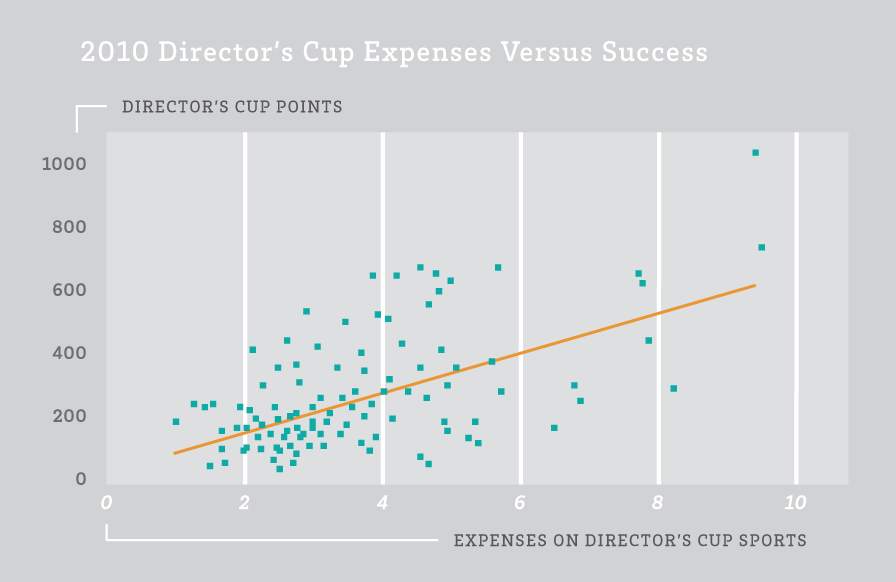
Points= 65.30(Expenses in Millions)+3.15
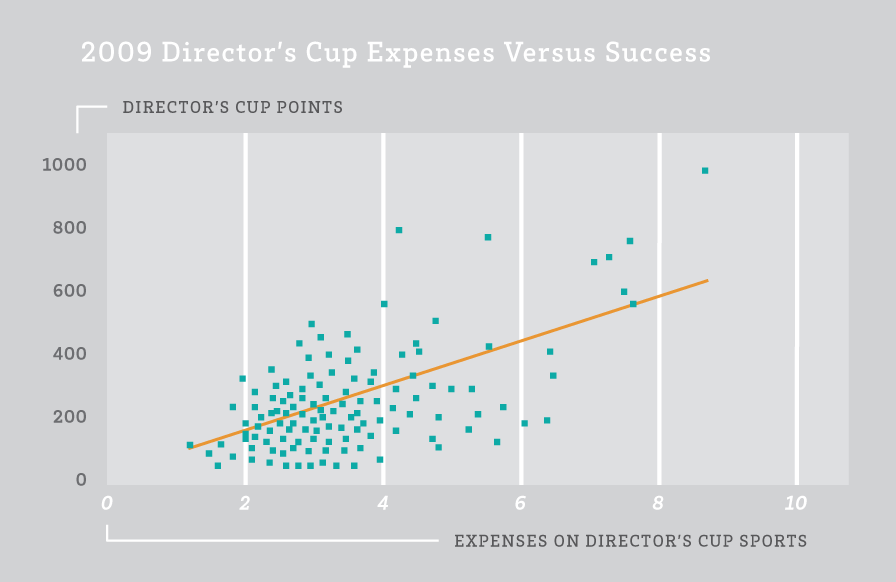
Points= 74.76(Expenses in Millions)-11.77
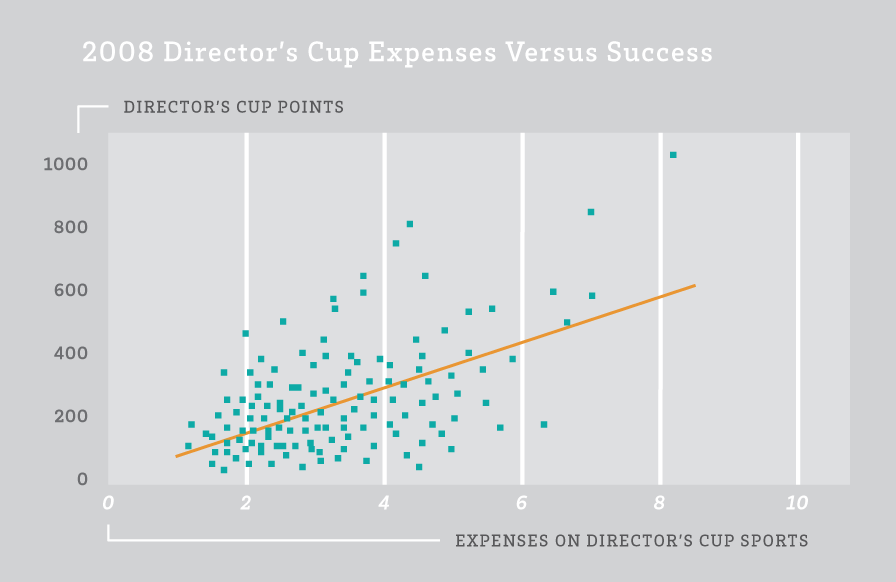
Points= 74.96(Expenses in Millions)-19.49
The second way we looked at the Directors’ Cup success was to isolate the Top 10 teams in our most recent data (2011), looking at their progressions to see if spending correlated with their ascension to the top. Specifically, we took the top 10 teams and looked for those that had made strides in athletic success in the last three years to see if there was any massive spending that happened before the move. Below is a graph of the top 10 teams and their previous finishes:
Looking at these teams, we see that Augustana in South Dakota, Grand Canyon in Arizona, and Shippensburg in Pennsylvania, all more than doubled their point totals within a few years. We next scrutinized their expense records for those years, to see if large spending increases coincided with these point doublings. The graph below shows this data:
Looking at the results, in two of the three cases—Augustana and Shippensburg—there was little to no change during this time. It would seem that these teams are not paying millions of dollars more of each point, instead finding another way to reach the elite realms of Division II. The other case—Grand Canyon—is very interesting, precisely because large spending went hand in hand with athletic success. Grand Canyon, as we have discussed previously, is in the process of moving to Division I, and it appears that from 2008-2010 their spending increased dramatically, producing serious results in 2011—to the tune of 636 points and an 8th place finish in the Directors’ Cup.
In conclusion, more often than not there is little linear correlation between spending and future athletic success, using Directors’ Cup points as a metric for that success. Even amongst the big spenders, there is not a direct linear path to success.
That being said, as we look into the top 10 programs in the Directors’ Cup in 2011, we see that at least one of those top programs was able to double their Directors’ Cup points directly after a huge spending increase—in addition to a move to Division I. This may have been the cause of a conscious effort by the athletic director to beef up the quality of athletics in anticipation of this move, but, it could also just be many sports coming together at the right time. Despite the fact that it would be difficult to state that greater spending is directly responsible for greater success, Grand Canyon has shown that, while not a trend, such achievement is definitely a possibility.


